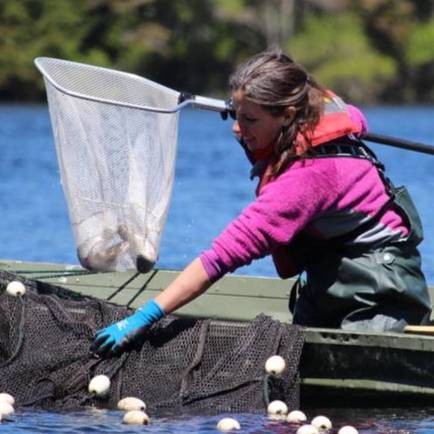David Green Pursues Passion for Carnivore Conservation and Management
Green recently defended his Ph.D. in Integrative Biology at Michigan State University, which focused on anthropogenic disturbance and ecological change in the Masai Mara National Reserve in Southwest Kenya. While a member of the Holekamp Lab, Green’s research focused on wildlife conservation and management in Africa. That experience helped him land a new job with Oregon State University as a postdoctoral scholar. “I’m excited to get involved with similar conservation topics in the United States,” expressed Green.
In his new position, Green is actively involved in a long-term study to monitor fishers (Pekania pennanti), medium-sized forest-dwelling carnivores approximately the size of a large housecat, in the northern Sierra Nevada and Southern Cascade Mountain ranges. Although reclusive, fishers in California are currently only known to exist in two populations, one of which is the study region where Green is working. The survival of this species is in trouble largely thought to be because of habitat change, and rodenticides used at illegal marijuana grow sites. These effects are thought to be so great, that fishers are being petitioned as a threatened species for the Endangered Species Act (ESA) and the California ESA. To make matters worse, wildfires in 2013 damaged approximately 20% of Green’s study site, with the effects of these wildfires on fisher populations largely unknown. According to Green, “A lot of effort has been put into this project by the U.S. Fish and Wildlife Service, North Carolina State University, and Oregon State University to see how fishers in northern California are faring over time, and identifying and managing the threats to their persistence.”
Green’s role in the project is twofold. First and foremost, he is collecting field data using a non-invasive survey method. An expansive mapping grid of 100 hair snares and track-plate boxes have been set up throughout the fisher’s habitat in Northern California. These boxes are regularly baited and checked by Green and his colleagues to see which boxes are visited by fishers to understand how they are utilizing the landscape and how they might respond to fire. Green also collects any viable hair samples for DNA analysis to identify individual fishers. Once the field collection is completed in mid-November, Green will move to Portland for the second part of the project. In phase two, Green will input and analyze the data he collected at the Oregon State University Institute for Natural Resources.
Green’s passion for conservation and management research with tangible outcomes has been, and will continue to be, central to his career pursuits. “This opportunity is a great way for me to learn new skills, to make new connections, and to grow as a researcher,” Green explained.



